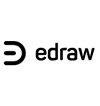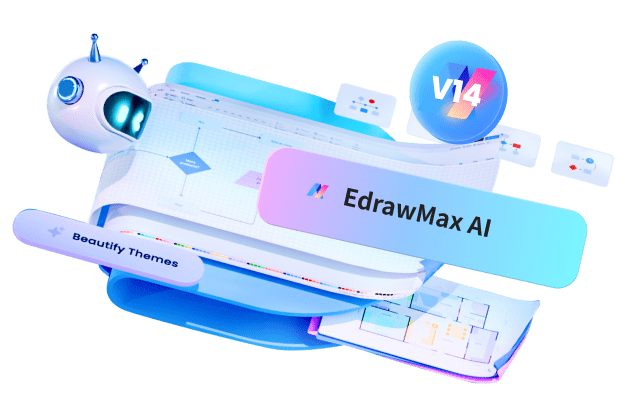In an era of fluctuating energy prices and evolving market dynamics, mastering the art of energy risk management is paramount for businesses and investors alike. This comprehensive guide unveils essential strategies and best practices to navigate this complex landscape with confidence.
From hedging techniques to in-depth market analysis, we'll equip you with the tools needed to make informed decisions and safeguard your investments.

Energy risk management is the practice of protecting against risks and uncertainty in energy prices and supplies. It involves using various strategies to minimize the financial impact on a company or organization from fluctuating energy markets. The main goal is to reduce exposure to volatility in order to have more predictable energy costs.
Effective energy risk management is crucial for organizations with high energy needs to maintain stable budgets and operations.
In this article
Part 1. Guarding Business: Why is Energy Risk Management Important
In today's volatile energy markets, understanding and effectively managing risks is a cornerstone for business success.
- Ensures cost stability amid fluctuating energy prices.
- Shields against geopolitical and supply chain disruptions.
- Enhances budget predictability and financial planning.
- Supports sustainable practices by minimizing environmental impact.
- Fosters investor and stakeholder confidence through prudent risk mitigation.
- Enables strategic decision-making for long-term growth and competitiveness.
Part 2. Best Practices: Energy Risk Management
Implementing sound energy risk management practices is crucial in today's dynamic market to secure stability and profitability.
- Regularly research the market landscape and keep informed on developments in the industry.
- Diversify energy sources to reduce dependency on volatile markets.
- Implement hedging strategies to mitigate price fluctuations.
- Regularly review and adjust risk management policies to align with business goals.
- Foster cross-functional collaboration between finance, operations, and procurement teams.
- Stay informed about regulatory changes and compliance requirements in the energy sector.
- Continuously monitor and assess the effectiveness of risk management strategies.
Part 3. Guiding Success: Role of an Energy Risk Professional
The role of an energy risk professional is to identify, measure, and manage the various risks associated with the energy products. Their primary responsibilities include:
- Analyzing the energy markets to assess price volatility, supply/demand dynamics, geopolitical risks, weather impacts, and other factors that cause uncertainty. This helps quantify the organization's exposure to risk.
- Developing and implementing hedging strategies using financial instruments like futures, options, and swaps to mitigate price risk. They determine optimal hedging ratios, the timing of hedging, and which contracts to use.
- Creating and running analytical models to forecast energy prices, optimize bidding strategies, evaluate investments, and simulate stress scenarios. These models inform business decisions.
- Overseeing the procurement of energy supplies, including negotiating supply contracts and managing relationships with utilities and suppliers.
- Monitoring real-time market data and re-calibrating strategies as market conditions change. This adaptable approach maintains effective risk management over time.
- Reporting on risk exposures, hedge positions, and market trends to key internal stakeholders. They communicate risks in an understandable way.
The energy risk professional plays a key role in the organization by giving leaders visibility into energy risks and empowering strategic decisions. Their expertise helps stabilize costs and minimize volatility.
Part 4. Visualizing Risks: Creating a Risk Management Diagram Using EdrawMax
Creating a Risk Management Diagram using EdrawMax is a vital step toward visualizing and effectively addressing potential risks within an organization. This powerful software provides a user-friendly platform to map out risk scenarios, assess their likelihood, and plan corresponding mitigation strategies. With EdrawMax, you can seamlessly design comprehensive diagrams that offer a clear, at-a-glance view of the entire risk landscape.
EdrawMax offers a diverse range of customizable templates tailored specifically for risk analysis. Additionally, EdrawMax's collaboration capabilities enable teams to work together in real time, fostering a collaborative approach to risk management. Its compatibility with various file formats ensures seamless integration into existing workflows, making it a versatile tool for businesses of all sizes.
With EdrawMax, you're not just drawing diagrams; you're creating a dynamic framework for proactive risk management.
Here are the steps to create a risk management diagram using EdrawMax:
Step 1: Open the EdrawMax application on your computer. Click on the "File" menu, then select "New". Alternatively, switch to the “Template” category from the left menu pane, and search for “Risk Management”. Pick a suitable template and move ahead.

Step 2: Use the extensive library of pre-designed shapes and elements provided by EdrawMax. Drag and drop these onto your canvas to represent different aspects of risk management such as risk identification, assessment, mitigation, and monitoring.

Step 3: Use lines and connectors to establish relationships between different elements in the diagram. Organize the elements in a logical flow to represent the sequence of steps in the risk management process.

Step 4: Click on any entity and select “Styles” to change the font or color style to make the diagram more visually appealing.

Step 5: Once satisfied with the diagram, save your work in a suitable file format. EdrawMax supports various formats including PDF, PNG, and more, ensuring compatibility with other software and easy sharing.

Conclusion
In summary, managing energy risks is crucial for businesses in today's fast-changing market. It helps them deal with price shifts, uncertainties, and rules. Using tools like EdrawMax for clear risk diagrams is a smart move. This way, companies can spot, evaluate, and handle risks effectively. It's not just a good practice, but a key strategy for long-term success in the energy sector.




